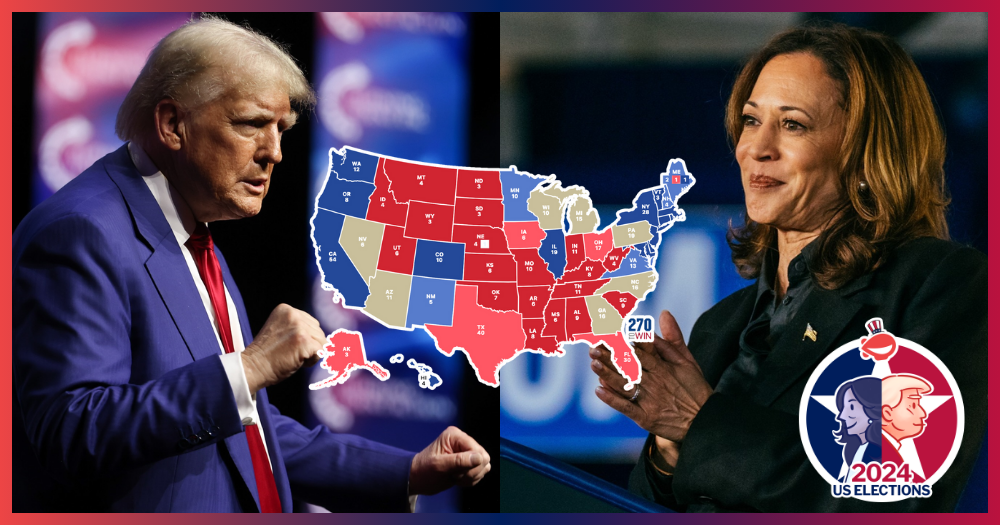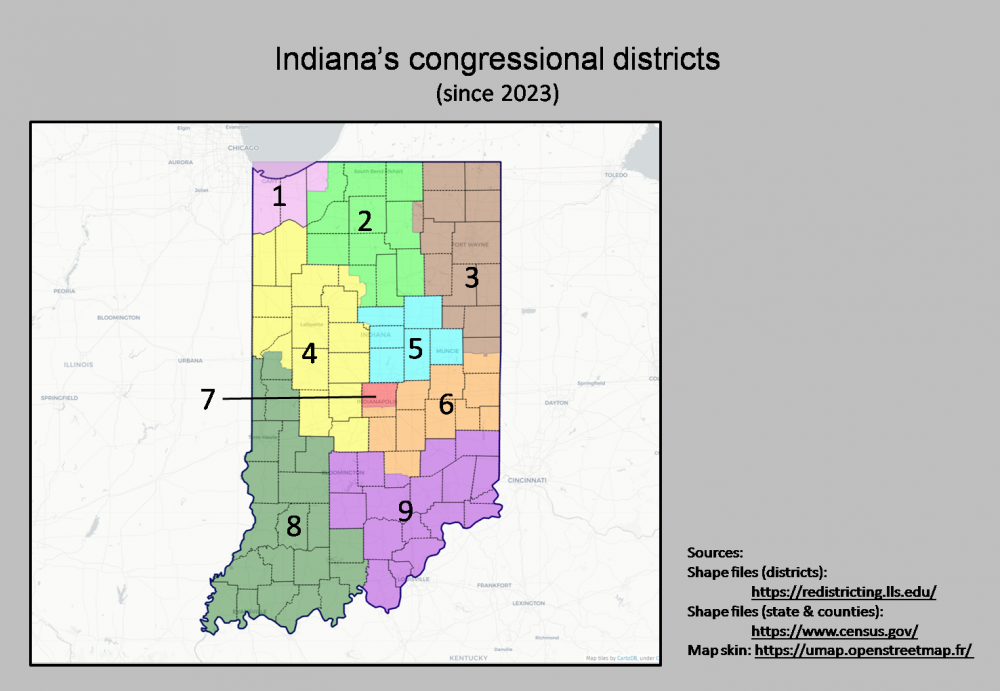In S'pore, the presidential candidate with the most votes wins. In the US, it works differently, explained.
The Electoral College is the key.

In the United States of America, all men may be created equal, but not all votes are considered equal.
Unlike in Singapore, receiving the most number of votes in a presidential election does not make one the president.
After all, Hillary Clinton got more total votes than Donald Trump in 2016, but Trump was still elected president.
Instead, in order to win, one must get a majority of votes in the Electoral College.
Confused? Here's how it works.
The Electoral College
Every state in the U.S. (and the capital of Washington DC) awards a certain number of electoral votes (EVs) to the candidate who gets the most votes within that state.
The margin of victory does not matter. A candidate could defeat their challenger by 1 million votes within a state. They could lose by 100 votes.
It's winner-takes-all rules within each state, and the winner is awarded all of that state's EVs.
There are two exceptions in Nebraska and Maine, but we'll explain those later.
As there are 538 EVs to be awarded in total, a candidate must score at least 270 to win.
Safe states
However, there are a number of states where support for one party over the other is so strong, there is almost nothing a candidate can do to sway the majority of voters to their side.
Think of states like California, which overwhelmingly supports the Democratic party, or Texas, which has solidly backed the Republicans.
This wasn’t always the case, with Democratic president Jimmy Carter winning Texas in 1976 and Republican president Ronald Reagan winning California in both 1980 and 1984.
But ever since 2000 or so, political trends have delivered a map with more states considered "safe".
Those states are colloquially known as "deep blue" or "deep red", referring to the Democrats and Republicans respectively.
This means that either candidate has a safe bank of EVs they can depend on.
Take a look at this map. The states in deep red or blue are those where Trump or Joe Biden won by five percentage points or more in 2020.
The strange case of Nebraska and Maine
Now remember Nebraska and Maine? True to the individualistic American spirit, they do things differently.
Each U.S. state has Congressional districts. For example, the state of Indiana has nine Congressional districts.
Each district elects one Representative to the U.S. House of Representatives (which is roughly equivalent to Singapore's Parliament).
 By CX Zoom - Own work, CC BY-SA 4.0.
By CX Zoom - Own work, CC BY-SA 4.0.
Nebraska and Maine award two EVs to the popular vote winner in their state, plus one for each of their Congressional Districts.
This wasn't a factor in older presidential elections, as the districts generally voted the same way.
But the first split in Nebraska occurred when Barack Obama won Nebraska's Second District in the 2008 election.
So Obama received one EV, while his opponent John McCain received four EVs, from Nebraska's total of five.
The first split in Maine occurred when Trump won Maine's Second District in 2016, gaining one EV while Hillary Clinton received the other three.
Trump won the Second District again in 2020.
This year, polling indicates that Maine's Second District will once again vote for Trump, while Nebraska's Second will go for Harris. The map is updated like so:
The Swingers
Notice how there are some states that are not coloured either red or blue?
Those are known as "swing states", since the margins between the winner and loser were very close in the 2020 election.
This means that both candidates are going all out to win the voters in these states, as they just need a comparatively smaller number of voters to tip the state in their favour.
The swing states are the key to becoming president.
The Blue Wall
The most important swing states in 2024 are the so-called "Blue Wall" states of Pennsylvania (19), Michigan (15) and Wisconsin (10).
Kamala Harris can add the Blue Wall to her safely-banked EVs and finish with a total of 270 EVs, just enough to win the election, even if she loses all the other swing states to Trump.
Trump famously cracked the Blue Wall in 2016, winning all three and propelling him to victory.
Hillary Clinton's neglect of the Blue Wall states was cited as a major reason for her loss.
That's why both candidates have been hitting the Blue Wall in recent weeks, in major cities like Philadelphia, Pennsylvania and Ann Arbor, Michigan.
But Pennsylvania has emerged as the most important of the Blue Wall states, with statistician Nate Silver estimating that Trump's chances of overall victory shoot up to 90 per cent if he takes Pennsylvania.
While the Keystone State is a huge prize, either candidate can still win without Pennsylvania.
For instance, Trump can also win if he takes either of the remaining Blue Wall states, keeps North Carolina, and wins back Georgia and Arizona.
The latter two states were won by Biden in 2020 with razor-thin margins.
The Sun Belt
But the Blue Wall isn't the only path to victory.
Harris wins if she gets all three of the Blue Wall, but she has another way to win even if she loses all three.
In such a scenario, Harris needs to run the gauntlet in the "Sun Belt", which extends from Virginia and across the southern regions to California. It's called the Sun Belt due to its warm climate.
So if Harris loses the Blue Wall, but manages to win North Carolina, Georgia, Arizona and Nevada, she can still win.
However this is unlikely, as polls indicate that Trump is stronger than Harris in the Sun Belt than in the Blue Wall.
Score draw, and breaking the tie
There is one more alternative that is extremely rare, but it could still happen.
What if neither candidate gets the necessary 270 EVs?
Imagine if all the dust has settled, and both candidates get exactly 269 votes each.
A possible outcome could look like the one below:
If that happens, the U.S. House of Representatives decides the winner on Jan. 6, 2025, when Congress meets to certify the results.
Again, it isn't as simple as a straightforward vote. Instead of each Representative casting a vote, there are only 50 votes cast, one from each state. These votes are decided by the delegation of Representatives from each state.
For example, if seven out of nine Representatives from Indiana vote for Trump, then that's one state vote for Trump. If 40 out of 52 Representatives from California vote for Harris, that's still just one state vote for Harris.
The winning candidate must get a majority, i.e. 26 state votes.
And since Americans also vote for their House Representatives in the same election as choosing the president, it really is anyone's guess as to how many state legislatures each party controls, and how it would therefore break the tie.
Keep up with the US Presidential Election with Mothership
Photos from Donald J Trump/Facebook, Kamala Harris/Facebook, and 270towin.com. Maps from 270towin.com.
MORE STORIES




























